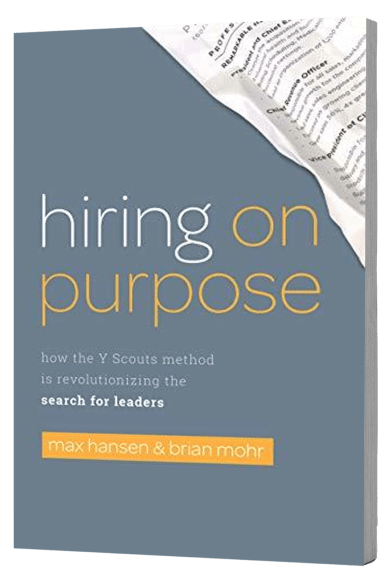Many people use LinkedIn as an executive recruitment tool when seeking qualified candidates. The platform showcases tons of experienced professionals and, on the surface, appears to be the best place to start looking for good people. And, for some companies, it may be. But is it right for your business?
There are advantages to using LinkedIn. But there are distinct disadvantages as well. Whether you’re looking for someone to hire or open to a new challenge in your career, you should understand LinkedIn, its best uses, and the caveats of deploying it on either side of a job search.
Table of Contents
ToggleThe Benefits of LinkedIn
LinkedIn offers numerous benefits for both recruiters and candidates. In terms of social media platforms intended for professionals, it has no real competition. Here are some of the reasons why recruiters and candidates flock to LinkedIn.
C-Suite Candidates Prefer LinkedIn
You won’t find top executives on just any old social media platform. But they are on LinkedIn. According to a JP Morgan Chase Executive Board survey, 79% of C-suite executives use LinkedIn. According to Y Scouts Search Director, Emily Flaesgarten, “At the C-suite, candidates are more likely to use LinkedIn [as well as] recruiters in general, so [executives] are more likely to respond, whether it is with interest or not.”
LinkedIn Makes It Simple to Find People
Compared to other platforms, LinkedIn is easy to use. A search bar appears at the top of each page, allowing you to search by company, industry, geographic location and more. Sending messages is easy as well. Y Scouts Search Director Deborah Shaw, says, “The messaging function is simple and includes the ability to create and use templates.” Further, the platform plays nicely with other recruiting tools. “LinkedIn easily interfaces with ATS systems,” she adds, an important feature for many companies.
LinkedIn Has Tons of Passive Candidates
“Most professionals are on LinkedIn whether they are open to new roles or not. This allows recruiters to source passive candidates,” Shaw says. In a tight job market, a passive candidate can be your best bet since they are less likely to be interviewing anywhere else. They are content in their role, which could indicate that they are performing well and adding value. Plus, since they aren’t actively looking, their lack of urgency means that both the candidate and the company can take the time to ensure a proper fit.
LinkedIn Can Fill the Talent Pipeline
Y Scouts Search Consultant, Evalee Torres, loves LinkedIn because it allows you to foster connections and build your image with promising prospects. “You can stay top of mind,” Torres believes. Further, recruiters can get to know more about the folks they have on their radar. “You have the ability to see how and who the candidate interacts with to give you clues about the intangible qualities you can’t view on a resume,” says Torres, which makes getting to know candidates a bit easier.
LinkedIn Attracts Job Candidates
Of course, many of the benefits above work for job candidates, as well. They can research companies and individuals, find industry leaders, look for companies with growth opportunities and showcase their talents for greater visibility. In addition, job seekers can connect and interact with decision-makers and hiring managers and get to know them through messages and comments. Just as companies want to be top of mind, it’s also a great brand-building strategy for future job candidates.
Drawbacks to LinkedIn
LinkedIn is an excellent tool for networking and building relationships. It does have a downside, however, when it comes to advertising open executive positions. LinkedIn may not be the best forum for this purpose.
LinkedIn Is not Suitable for Posting Positions
“The goal of [an] executive search is to find those top passive candidates and not those who are actively looking,” says Flaesgarten. Yes, you can source passive candidates on LinkedIn through its search functionality. But when you post a position on the platform, that’s not who you’ll get. Instead, you are likely to attract active job seekers, probably more than you can handle. Flaesgarten adds, “Public posts tend to generate a poor candidate pool leading to a lot of unqualified or underqualified candidates.”
There are Lots of Chameleons
The best executive searches are covert. This means that potential hires don’t know who’s doing the hiring or even the title of the position they want to fill. They also don’t get to preview a laundry list of the future executive’s desired skills and capabilities so that they can tailor their experiences to the role. Ideally, according to Shaw, you want to eliminate “the tendency for candidates to shape themselves into a role that may not be the best fit.”
Companies that plan to use an executive search firm like Y Scouts will generally want to avoid posting executive positions on LinkedIn to reduce the number of unqualified candidates. There may be exceptions for challenging searches, but this does not eliminate the need for proper vetting. In fact, it may increase the need. As Shaw says, “Any qualified candidate should go through [Y Scouts’] internal interview process the same as all other candidates.”
How Y Scouts Leverages LinkedIn
At Y Scouts, we conduct intensive research to find the best people for your business. As Flaesgarten says, “We are able to search for individuals using a variety of different parameters, finding people who may not otherwise be found.” Some of those people can be found on LinkedIn.
We send highly qualified candidates a tailored InMail or a connection request with a brief note. LinkedIn is a solid tool with a good search engine. We recognize its strengths as well as its limitations. “We are able to take advantage of the ability to learn more about a candidate based on what they have chosen to share on their profile. We have instant access to a candidate’s recommendations, endorsements, and projects,” Torres says.
Executive Search Professionals Offer LinkedIn Advice to Candidates
Even when you’re not looking for a job, you should consider the personal brand you’re building on LinkedIn. Y Scouts executive search professionals suggest that you should invest in your LinkedIn profile and provide these three tips:
Always Be Courteous
The best recruiters spend quite a bit of time researching who you are and drafting an email that is customized and respectful. Take a few minutes of your day to answer them. “Respond politely to any and all messages; you never know who someone knows or where they will be next,” says Flaesgarten.
Post a Professional Photo
Your profile picture matters. If you don’t have one or if it needs updating, do so. You don’t have to get a professional headshot, but if you’re an executive, why not look the part. If you hate having your picture taken, take enough shots to ensure that you find one that has you looking approachable and confident. Deborah offers, “Use a clear profile photo that is a headshot only… and smile!”
Bring the Real You
Don’t give in to the tendency to exaggerate your capabilities or project an image that isn’t genuine. Make sure that your profile strikes the right tone and captures your personality as well. According to Torres, “Be authentic in your posts as well as your responses. You will attract the right opportunities if you stay true to who you are professionally and personally.”
Looking for Your Next Executive Hire?
At Y Scouts, the search extends far beyond LinkedIn. Our covert search process helps ensure you find qualified candidates, whether through social media or one of our other intensive and customized processes. You can rest easy knowing we will find the right executive for your company. If you are ready to find your next leadership hire, contact Y Scouts today.



